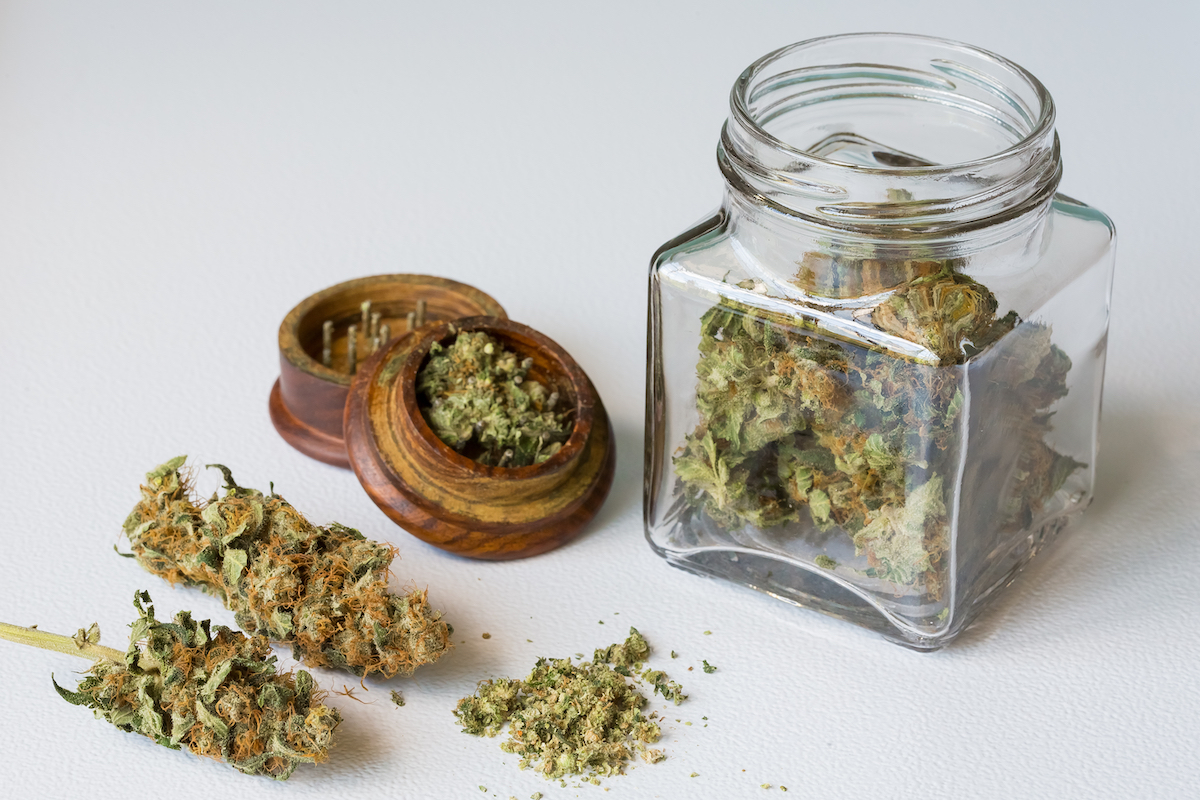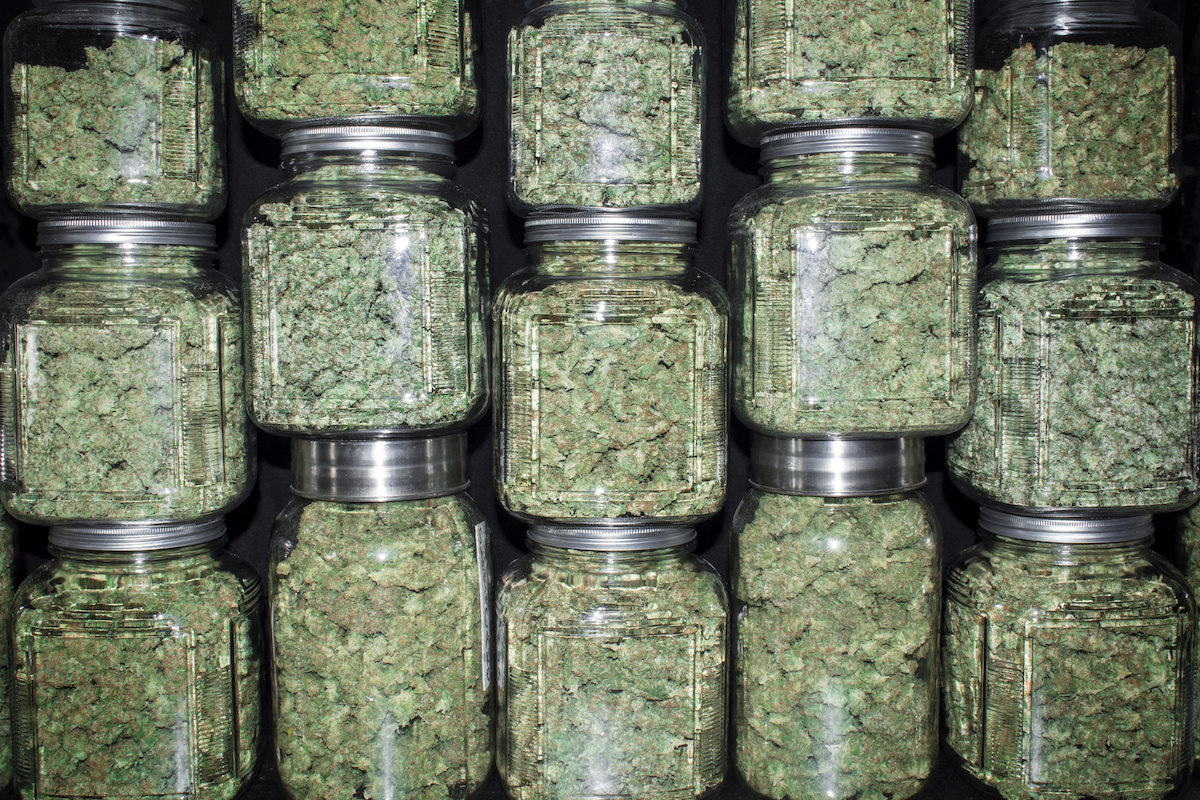After many weeks taking care of your crop, the time has finally come. You have chosen the right harvest time and have started cutting your plants. During trimming, you have cut off all the leaves too. Now all that remains are the buds, the heart and soul of your cannabis crop. But there is still a final step left: the drying and curing stage, a process to remove moisture from the flowers to obtain a top quality product.

The need for this step must not be underrated. A proper drying and curing process is key to producing that smooth, flavourful (and yes, more potent) smoke, a distinctive trait of the finest cannabis. Here we will explain how to do it properly. Buf before we do, let's have a look at why curing cannabis is so important.
Curing for preservation purposes
People have been curing their food since time began. In fact, the ability of humans to cure and store food for later consumption may have been the most important step to creating civilised societies.
Although each type of food requires a different curing process for best results, the aim is always the same: to preserve the product and retain its flavours, aromas, and nutrients; and in the case of cannabis, to also retain cannabinoids.
From the moment the plant is cut, it starts to degrade as enzymes and aerobic bacteria break down excess sugars and starches produced by chlorophyll decomposition. The presence of these residual sugars and minerals is what gives that burning sensation in the throat when smoking cannabis that has not been cured properly.

The curing process forces the plant to use those residual sugars, starches and nutrients before they degrade. In short, proper curing stops the degradation process before volatile compounds like terpenes and cannabinoids evaporate or transform into less interesting compounds. Thus, a good cure will not only improve cannabis aroma and flavour, but will also increase its potency.
This is because cannabinoid synthesis (the process of creating those chemical compounds) continues even after harvesting due to the effect of oxygen. For instance, when freshly-harvested cannabis flowers are kept at the right temperature and humidity level, non-psychoactive cannabinoids will carry on transforming into THCA, the acidic form of the psycho-active THC, resulting in a product with a higher content of this cannabinoid.
How to dry cannabis
There are many techniques for the drying and curing of fresh cannabis buds, but most growers use variations of a popular method that has proved effective over the years. This is the method that we will focus on here.
The first step is to dry the buds. The most popular method is to cut the branches, trim the unwanted leaves and hang the branches upside down from a line or wire. Some growers like hanging whole plants, while others prefer snipping the buds from the branches and placing them on drying racks. Leaves can be fully trimmed before drying (wet trimming) or can be left until later (dry trimming.)
Regardless of the drying method chosen, cannabis should be kept in a dark room, as light could degrade THC. Temperatures should be kept within the 15-20°C range, and humidity between 45-55%, using a small fan to circulate the air gently. This is crucial for the preservation of terpenes, which provide aroma and flavour to the final product. It is therefore recommended to have a dehumidifier, A/C unit, or another method to ensure that conditions stay within this range.

During the drying process the water content of the buds needs to be reduced from 75% to 10-15%. After one or two weeks, the branches should snap gently when bent, as opposed to folding like they do when they are fresh, and the flowers' exterior should be slightly crunchy. When this happens, it is time for the next stage.
How to cure cannabis
Once you have verified that your buds are dry, it is time to cure them:
1- Separate the buds from the larger stems (you can finish trimming them if necessary) and place them into airtight containers.
2- Glass jars are the most popular, but you can also use ceramic, metal, wood, or plastic containers. Place the flowers loosely inside the containers, which should be filled to a maximum of 2/3 so the buds have some air to breathe. The flowers should be able to move freely when shaking the jars. If the buds stick together, they will need more drying time before going back into the containers.
3- Seal the containers and place them in a cool, dry, dark spot. Within the first day, you will notice that the buds are no longer crunchy and dry on the outside, because the moisture inside the flowers rehydrates the outer areas. If this is not the case, then you have over-dried your cannabis.
4- During the first week, open the containers several times per day and let the flowers 'breathe' for a few minutes. This allows moisture to escape and replenishes the oxygen inside the container. You can also use a hygrometer to verify the inside humidity (it should ideally be around 60-65%). If you notice smell of ammonia when opening the container, it means that the buds are not dry enough to be cured, and anaerobic bacteria are consuming them, which will eventually lead to rotten cannabis. During the curing process, jars must be regularly checked for signs of mould or fungi, and infected buds must be disposed of immediately, or otherwise the whole jar will be spoiled.
After the first week, you will only need to open the jars once every few days.
5- Although the buds will be ready for smoking after two to four weeks, continued curing for four to eight weeks, or even longer, will further improve marijuana flavour and potency. Keep in mind that some strains may require up to a 6-month curing time for best results. On the contrary, excessive curing beyond 6 months may be detrimental. Cannabis will be fully cured when its humidity lies betweeen 8-10%, and buds should be dry, crunchy and spongy at the same time.
6- Once cannabis has been properly dried and cured, the risk of mould and bacteria diminishes greatly, so it can be stored for longer. An air-tight container in a dark location will allow you to store your buds for up to two years, while maintaining quality.

The curing process is possibly the most overlooked aspect of cannabis production. Due to the competition between the medicinal and recreational cannabis markets, an increasing number of growers are paying attention to this process, which turns a decent product into an outstanding one. And now you can do the same with your own crop: the best marijuana always demands a bit more TLC, and the curing process is no exception.





Give us your feedback
Your rating (between 1 and 5)
1 2 3 4 5Leave a comment
Read comments in other languages